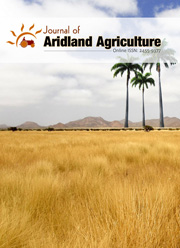Actual evapotranspiration evaluation based on multi-sensed data
DOI:
https://doi.org/10.25081/jaa.2021.v7.7087Keywords:
Sentinel-1 , Landsat-8, Backscattering (dB), Lysimeter, Water Stress, EgyptAbstract
The importance of active and passive remote sensing data integration appears strongly on cloudy days. The lack of passive remote sensing data on cloudy days prevents the benefit of large-scale satellite data in cloudy areas, while the advantage of active remote sensing, it could penetrate the cloud and collect data underneath the cloud. The main objective of this paper is to determine the benefits of combining active and passive remote sensing data to detect actual evapotranspiration (ETa). Sentinel-1 radar data represents active data, while Landsat-8 represents passive data. Multi-date data for Landsat-8 and Sentinel-1 were used during the 2016 summer season. The characteristic soil texture in the study region is clay. The meteorological data were used to estimate ETo based on the FAO-Penman-Monteith (FPM) process, while the Lysimeter data were used to test the estimated ETa. Landsat-8 data are used to measure the Normalized Difference Vegetation Index (NDVI) and the Crop Water Stress Index (CWSI). Crop Coefficient (Kc) is calculated on the basis of NDVI. The CWSI, Kc, and ETo were then used to determine ETa. Backscattering (dB) C-band Synthetic Aperture Radar (SAR) data extracted from the Sentinel-1 satellite was correlated with Kc and used to estimate ETa. The Root Mean Square Error (RMSE) reported relevant results for active and passive satellite data separately and the combination process. For Sentinel-1, Landsat-8 and combination methods, the RMSE reported 0.89, 0.24, and 0.31 (mm/day) respectively.
Downloads
Published
How to Cite
Issue
Section
Copyright (c) 2021 Mohammed Ahmed El-Shirbeny, Samir Mahmoud Saleh

This work is licensed under a Creative Commons Attribution-NonCommercial 3.0 Unported License.





 .
.